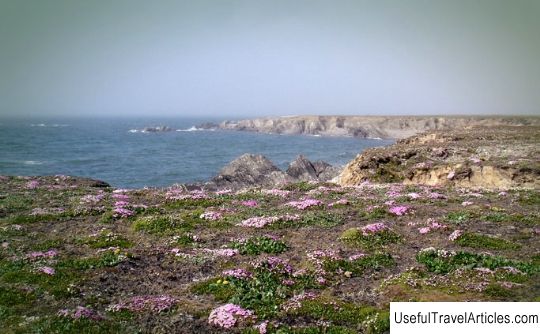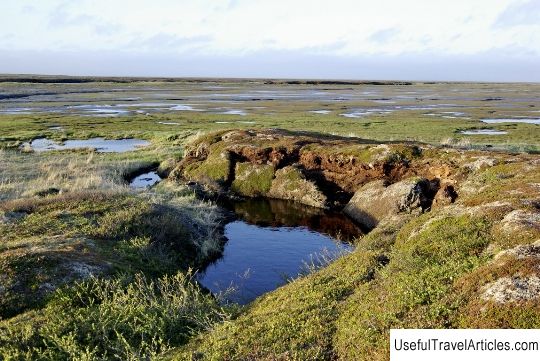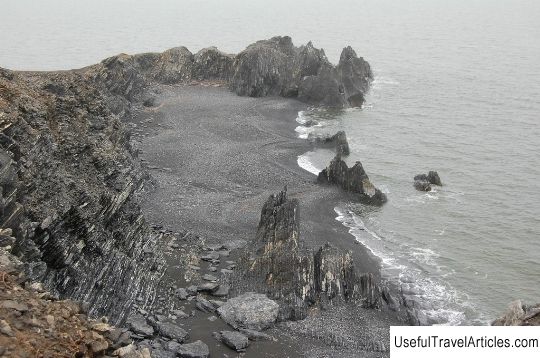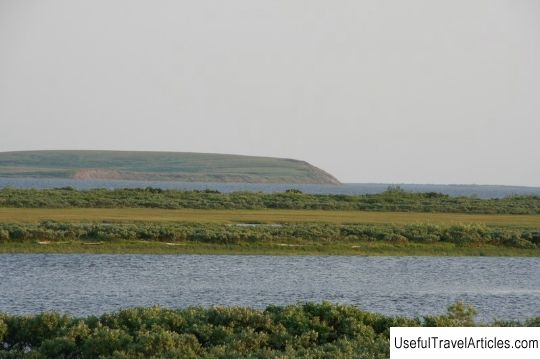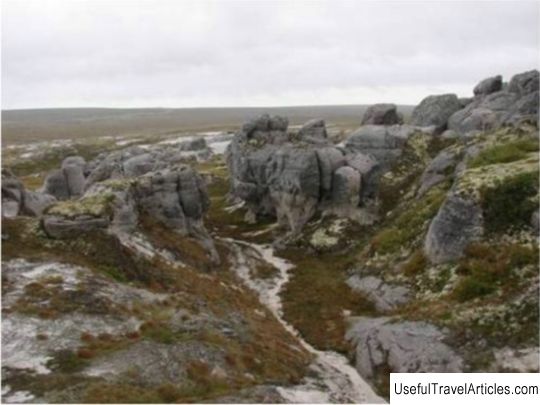Nature reserve ”More-Yu” description and photo - Russia - North-West: Nenets Autonomous Okrug
Rating: 8,2/10 (986 votes) 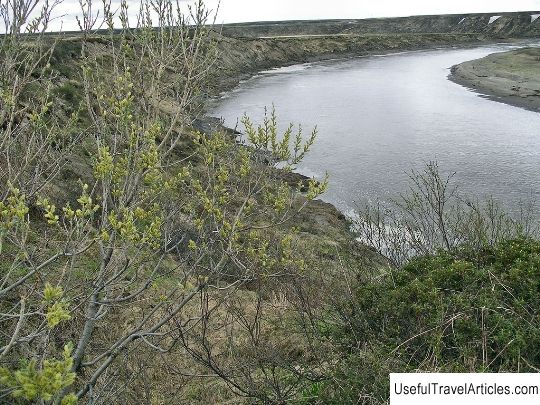
Natural reserve "More-Yu" description and photos - Russia - North-West: Nenets Autonomous Okrug. Detailed information about the attraction. Description, photos and a map showing the nearest significant objects. Photo and descriptionThe State Nature Reserve "More-Yu" is located in the Zapolyarny District of the Nenets Autonomous Okrug. The creation of the reserve took place on November 1, 1999 in accordance with the order of the NAO Administration. The purpose of the creation of the reserve was not only preservation, but also a detailed study of the animal and plant world of the Bolshezemelnaya tundra, as well as the relict spruce woodlands and unique archaeological sites. The total area of the reserve is 54.765 hectares, without the allocation of a protected zone. One of the main attractions of the "More-Yu" nature reserve is the presence of the largest island relict spruce forest located beyond the Arctic Circle in the tundra. Species of social and economic importance include nesting bean goose, which are characterized by an unusually high density. In addition, the reserve bears great scientific significance as a model object designed to monitor the dynamics and state of forest and tundra ecosystems due to the coming climate change. With regard to historical cultural sites, an important role is played by Habidepadara or the sinful and holy forest - a forest island, which the Nenets have the title of sacred. The most important ecosystems and landscapes are the main value of the state nature reserve "More-Yu". The island relict spruce forest is located within the tundra zone and is somewhat isolated from the prevailing range of Siberian spruce, which formed in the subboreal period of the so-called Holocene, which refers to more than 4.5 thousand years ago. The forest area is extended and predominates to a greater extent in the valley of the More-Yu River. The forest is about 12 km long from east to west, about 2.5 km from south to north. The growth of spruce trees in this area is carried out in separate groups and is characterized by a greater prevalence on the heated slopes of the banks of the new and old river channel. The existing forest island is of exceptional interest in the study and formation of the flora, as well as the phenomenon of the existence of a small fragment of the dark coniferous taiga outside its range. The natural diversity of the fauna and flora of the reserve has not yet been sufficiently studied and there is not enough material on this issue. To date, 246 plant species have been found within the distribution of the complex reserve, found in the area of the More-Yu Island. The avifauna is very diverse, which includes about 60 species of birds. It has been established that about 12 varieties of the Siberian taiga ornithocomplex are bred in spruce woodlands: 1 species - arctic, 2 species - European broad-leaved. The territory of the complex is characterized by a high population and a wide variety of geese, swans, waders and some other waterfowl, as well as the Upland Buzzard, Merlin and several other predators. The Red Book lists a large number of representatives living on the territory of the reserve. For example, these are 14 species of lichens, which include blackening arctocetraria, rough cladonia, harsh hypogymnia, hairy brioria, ascending fissia and others. As for vascular plants, the following are listed in the Red Book: blunt orthylium, two-colored sedge, wheel-shaped lomatogonium, alpine fatty, blackish skerda and some other species. Under special protection in the zone of distribution of the "More-Yu" reserve are: Lesser White-fronted Goose, Gray Shrike, Golden Eagle, Lesser Swan, Peregrine Falcon, White-tailed Eagle, Great Snipe and Gyrfalcon. In total, 39 representatives of flora and fauna are under protection, of which 29 species are protected under the state control. On the territory of the "More-Yu" reserve, it is strictly forbidden to allot land and allotments for building, the construction of structures and buildings, construction of roads and all types of communications, storage and use of pesticides and mineral fertilizers,       We also recommend reading Turkish war memorial description and photo - Crimea: Sevastopol Topic: Nature reserve ”More-Yu” description and photo - Russia - North-West: Nenets Autonomous Okrug. |
